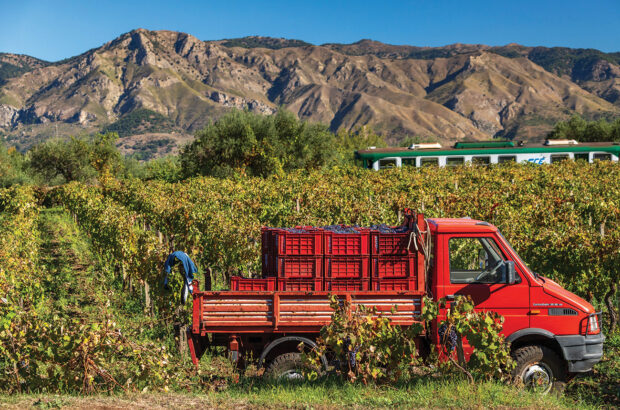I’m standing in a vineyard where the vines look like small trees, their branches spread in a high canopy with pink-skinned grape bunches protected from rain by small wax paper hats. Anyone who has visited Yamanashi, Japan’s wine country, would instantly recognise them as Koshu, the unique white grape variety that the Japanese have been, justifiably, busy promoting internationally.
I became a Koshu fan on my recent visit, but the bigger surprise was how intriguing I found Japanese wines from more familiar grapes. The most impressive one I tried was Grace Wine’s Blanc de Blancs Extra Brut 2014, a traditional-method sparkling Chardonnay like a fine grower Champagne.
This led me to wondering whether Japan has to go beyond Koshu to become a global wine hot spot. Yes, Koshu’s low-alcohol crispness and range of styles, from sur lie to skin-fermented orange wines, put it squarely in today’s wine zeitgeist. But I’m convinced Japan’s take on Merlot, Sauvignon Blanc, Pinot Noir and Chardonnay will be even more key in getting less adventurous drinkers to think of the country as the wine world’s new star.
Few drinkers realise that Japan is now home to four major wine regions and 418 wineries, according to the latest figures from the National Tax Agency (Koshu grapes are grown almost exclusively in Yamanashi). And last year, the country took a big step forward towards international recognition and quality by requiring wines labelled ‘Japan Wine’ to be made from grapes that are grown in Japan.
New Zealand is probably the first country propelled to wine fame by a single variety with its distinctive Sauvignon Blancs. Japan seems to be trying to follow its route. The owner of Grace Wine, Shigekazu Misawa, helped found Koshu of Japan a decade ago, and it hosts annual tastings in London.
It makes sense to lead with native grapes, especially when Koshu wines have improved so much in the past decade, thanks to advice from Bordeaux wine wizard, the late Denis Dubourdieu. Bone-dry, intensely mineral and fragrant, they deserve wider appreciation. (I don’t have equal confidence in Japan’s native red Muscat Bailey A, a cross between an American hybrid and Muscat of Hamburg, whose wines taste of candied strawberries.)
But I hope winemakers will highlight their wines made from European varieties. Many had a subtlety that seems to be a hallmark of Japanese wines. I tasted a light, juicy Zweigelt and a crisp, aromatic Kerner, both from the Hokkaido Wine Co. The cool northern island is also the best bet for Pinot Noir, which the world can never seem to get enough of.
Even in Yamanashi, almost every winery offers wines from varieties besides Koshu. At Lumiere, a spicy Tempranillo and a soft, plummy Cabernet Franc stood out. Grace Wine, which makes several top Koshus, also excels with Bordeaux varieties. Its 2015 Cuveé Misawa, a blend of Cabernet Sauvignon, Petit Verdot and Merlot, is complex, silky textured, long and elegant. ‘Petit Verdot does especially well here,’ says winemaker Ayana Misawa, a graduate of the University of Bordeaux who has also dabbled with Albariño.
Because of Japan’s humid climate, growing European grapes is difficult. In their focus on finding the right terroirs for specific grapes, many wineries are turning to higher altitudes and making more single-vineyard wines.
Suntory’s Tomi No Oka winery, at the forefront of growing Bordeaux grapes, makes a spicy, cherryish Premium Iwadarehara Merlot from a gravelly river terrace vineyard. ‘Our goals have changed,’ says Hiromichi Yoshino of its wine development division. ‘Before our target of taste was Bordeaux. Now we want to express our own terroir.’
Japan seemed a hotbed of the kind of experimentation essential for getting global attention. Boutique wineries are opening, and oenotourism is starting. Michelin-starred restaurants showcase the wines. Next year’s Tokyo Olympics will spread the word to the world. And it shouldn’t be just about Koshu.












